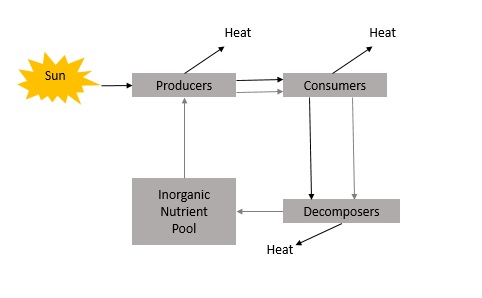Energy Cycle in Ecosystem
Energy moves life. The cycle of energy is based on the flow of energy through different trophic levels in an ecosystem. Our ecosystem is maintained by the cycling energy and nutrients obtained from different external sources. At the first trophic level, primary producers use solar energy to produce organic material through photosynthesis.

The herbivores at the second trophic level, use the plants as food which gives them energy. A large part of this energy is used up for the metabolic functions of these animals such as breathing, digesting food, supporting growth of tissues, maintaining blood circulation and body temperature.
The carnivores at the next trophic level, feed on the herbivores and derive energy for their sustenance and growth. If large predators are present, they represent still higher trophic level and they feed on carnivores to get energy. Thus, the different plants and animal species are linked to one another through food chains.
Decomposers which include bacteria, fungi, molds, worms, and insects break down wastes and dead organisms, and return the nutrients to the soil, which is then taken up by the producers. Energy is not recycled during decomposition, but it is released.
